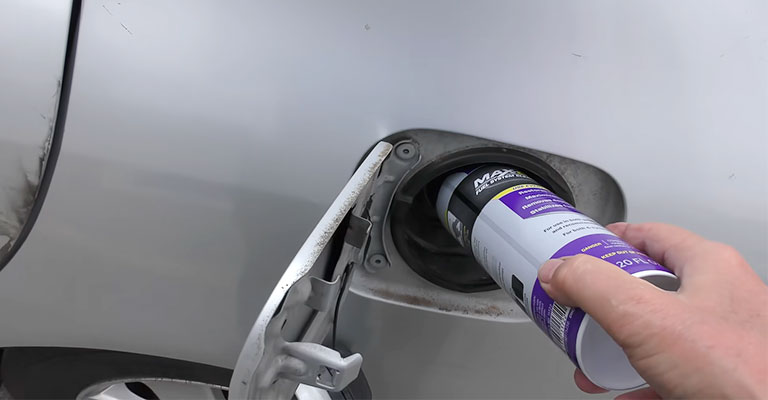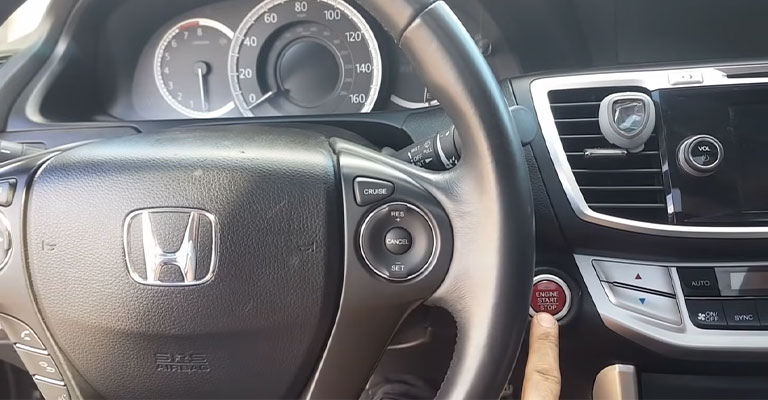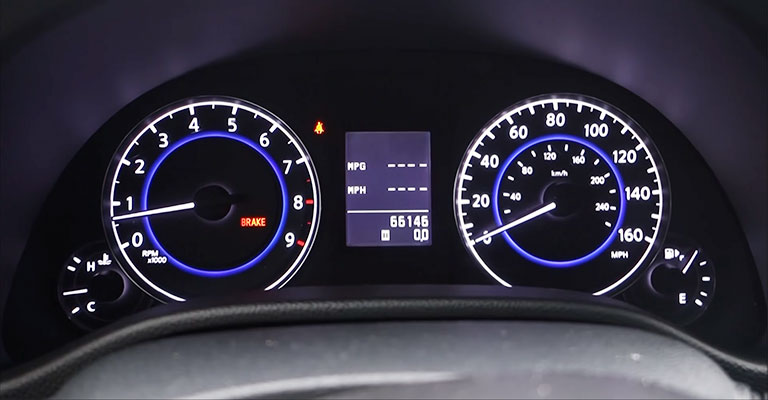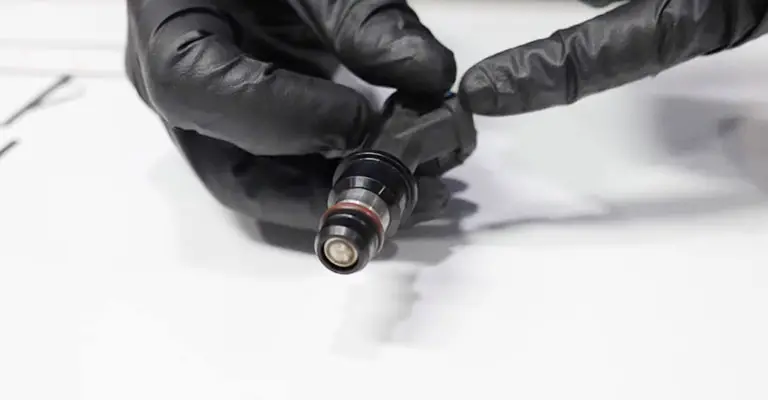Fuel injectors are the most important part of your engine. They control the air/fuel mixture that goes into your engine’s cylinders and other parts. If they clog up, they can cause a lot of problems with your engine.
If you’re having trouble starting your car even after replacing your spark plugs or noticing that your car is running poorly, it might be time to clean out your fuel injectors.
A dirty fuel injector can cause the engine to misfire or not run at all. It can also cause the engine to overheat and create a lot of smoke. Therefore, one of the most important things you can do to maintain your vehicle is to keep the fuel injectors clean.
Fuel injectors are small and can be difficult to reach, so it’s important that you know what you’re doing if you want to clean them without removing them.

How Do I Know If My Fuel Injectors Need Cleaning?
Have you noticed that your vehicle idles rough, performs poorly, or gives you poor gas mileage? Most likely, some dirty fuel injectors have caused it to have a bad case on Mondays.
You can smooth out your rough ride and return to carefree cruising by looking for signs that your fuel injectors are dirty and investing in quick cleaning.
The complex dance of fuel injection can cause your engine to malfunction if your fuel injectors are dirty or bad. You might have a problem with your fuel injectors if you notice any of the signs below.
You Are Unable To Start Your Car

By injecting fuel into the right cylinders, fuel is delivered to the engine. That’s the first job for fuel injectors. Your engine must get the right combination of air and fuel.
And if it doesn’t get Job #1 done, it won’t receive the right amount of fuel. You may not be able to generate combustion in your motor when the ratio of air to power is off.
The RPM Needle Goes Crazy
You typically control the dash gauges in your car. A high gas needle indicates an accelerated vehicle, while a low needle indicates a slow vehicle. So why do dirty fuel injectors cause RPM problems?
There is a possibility that they can cause your tachometer needle to move unpredictably – the gauge that shows the vehicle’s speed. While your car isn’t changing gears, the needle may move unprompted, indicating changes in RPM.
The Gas Mileage Goes Down

You can get the kind of gas mileage your vehicle manufacturer promises if your fuel injectors perform well.
Several engine issues can result in you visiting the gas station more often, but poor gas mileage could indicate that your fuel injectors are not working properly.
The Idling Gets Rough
Are you sputtering or shaking your vehicle at a stop sign or in traffic? There is no bucking bronco channeling going on. Instead, the message may tell you that your fuel injectors are dirty.
Even when you take your foot off the pedal, you usually hear “rough idling” as varying rotations per minute (RPMs). Rough idling can often be accompanied by engine stalling, which is characterized by a sudden drop in RPM and a noisy engine.
A Misfire Occurs In The Engine
The engine of your vehicle may misfire if your fuel injectors are dirty. Motor vibrations are caused by this problem, which causes the motor to feel like it is sputtering.
When there is a problem with a fuel injector, the delicate balance between fuel and air can be thrown off, causing misfires.
Other Bad Signs

Occasionally, fuel injector problems can prevent your car from starting if your injection system fails.
It’s also possible you forgot to fill up your car with gas, and your car won’t start. Fuel injector problems can also result from running out of gas (it happens to all of us!)
How To Clean Fuel Injectors Without Removing Them?

The fuel injectors can clog, resulting in higher gas consumption. Therefore, it is recommended that you clean your fuel injectors every 30k miles. Since fuel injectors have to be removed, cleaned on a bench, and reinstalled, you must be a skilled mechanic to clean them.
In this article, I will show you how to clean fuel injectors without removing them, so you won’t have to go through those hassles. Injectors can be cleaned without being removed at home with this easy-to-follow guide.
Step 1
You can clean your fuel injectors with a fuel injector cleaning tool suitable for your car’s make and model.
A fuel injector cleaning tool that comes with a hose and canister of solvent is recommended to dissolve hard carbon buildups better than any other cleaning solvent.
Step 2
In the fuel system, the fuel rail plays a vital role. It supplies gas to the fuel injectors. Depending on the car, the fuel rails are located in different places. Consult your owner’s manual if you are unsure where your fuel rail is located.
Step 3
It would help if you then disconnected the fuel rail next. It may be necessary to press down the clips on some fuel rails to remove them.
To remove some, you may need to loosen the clamps and hold them with a screwdriver, while to remove others, you may need to remove a gas tank lead pipe and a bolt holding the fuel rail.
Connect the fuel injector cleaning kit later after disconnecting your fuel rail, regardless of how it is designed.
Step 4
When you locate the vacuum line, ensure it is disconnected from the pressure regulator. Then, take it off by gently pulling it out. Reading your owner’s manual, you can find out if your car has a pressure regulator. Injectors are usually close to the regulator.
Step 5
The cleaning solvent should be poured into the fuel injector cleaning kit after the cover has been removed. Fuel cleaning kits should be filled to the brim.
Clean the engine with the cleaning kit. Place it above the engine. The cleaning kit must be attached to the hood. A hook on the cleaning kit allows you to attach it to the hood.
Step 6
As soon as the cleaning kit has been hung successfully, you will have to attach its outlet pipe to the fuel rail that has been disconnected.
With a wide range of connectors, the cleaning kit can be used on many different cars regardless of the year, make, or model. The cleaning solvent should be attached to the sizable connector.
Step 7
Cleaning compounds are injected into the fuel injectors under pressure to remove grime and debris. Make sure you remove the fuel tank cover before cleaning. This way, excess pressure will not build up, which could lead to combustion.
Step 8
To stop the fuel pump from sending gas to the engine, locate the fuse box and remove the fuel pump relay.
There are multiple relays in the fuse box, and they all have the same size and shape. It is ideal to consult the owner’s manual for exact information regarding the fuel pump relay.
Step 9
Connect the air compressor to the fuel injector cleaning kit – select a PSI of 40, 45, or 50 and connect the compressor to the air intake connector. You need pressurized air for the cleaning solvent to be exported into the fuel rail.
The engine should be turned on and allowed to idle for a few minutes until the cleaning solvent has been used. Then, connect the fuel injector cleaning kit to your engine and switch it off once you notice the solvent is out.
Step 10
Your fuel rail should be cleaned by removing the fittings and hose from the cleaning kit. The fuel pump lead hose and vacuum hose for the fuel regulator should be reinstalled. Make sure the fuel tank is covered.
One Last Thing
Clean fuel injectors should result in a smooth engine run, as well as a normal engine sound. Make sure your work has been cross-checked by starting the engine.
Be on the lookout for any leaks in the injectors, vacuum leaks, or abnormal noises that may indicate a problem. To ensure that the car runs smoothly, test it in your neighborhood. It is best to seek professional assistance if you notice weird noises.
The Bottom Line
There’s no denying that removing fuel injectors can be a bit of a headache, especially since you tend to have to hire a mechanic to do it for you anyway.
However, injectors can be cleaned without having to be removed, thanks to the cleaning method that can be used to clean them. You will need an air compressor and a fuel injector cleaning tool for this cleaning method.
Therefore, every vehicle owner should own a fuel injector cleaning kit. By doing so, fuel injectors are kept clean and in good working order. If you do not want to clean them on your own, you can always get a mechanic to do it for you.
Leave a Reply